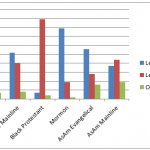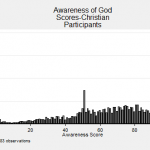Cognitive heuristics are mental shortcuts–rules of thumbs–that we use to make judgments about ourselves and the world around us. On of the best known heuristics is the “availability heuristic” that goes as follows. As we estimate the frequency with which something happens, we start by trying to think of an example of it, and if we can quickly think of an example then we think it’s a frequent occurrence.
Like most heuristics, it works well often, but it produces biases in some forms of social thinking. In particular, it highlights the potential for the media to distort our understanding about the probability of events.
You see, the media focuses on what’s uncommon or at least unexpected, and understandably so for who would want to read, hear, or watch information that is totally predicable? (“Next on the grass growing channel….”). As a result, however, the media gives us vivid portrayals of what rarely happens, and we then overestimate the frequency with which they happen.
Easy example. The verbal gaffes of presidential candidates are big news, so we can easily assume that they make them often when, in point of fact, they might be relatively rare. (At least a lot less frequent than mine).
Now, let’s apply this type of thinking to portrayals of religious figures.
 What makes news about religious people? Various things, of course, but in particular when they do not act in alignment with their beliefs. We all love a good, juicy “hypocrite” story after all. So, a priest abusing a child or a pastor stealing from his flock or whatever the religious scandal of the day is makes such information much more available when we recall it. This leads us to think that it happens more often than it does.
What makes news about religious people? Various things, of course, but in particular when they do not act in alignment with their beliefs. We all love a good, juicy “hypocrite” story after all. So, a priest abusing a child or a pastor stealing from his flock or whatever the religious scandal of the day is makes such information much more available when we recall it. This leads us to think that it happens more often than it does.
Case in point. In my Sociology of Christianity class, I have my students visit local churches and analyze the services from the perspective of various sociological theories. Their papers on their experiences nearly unanimously describe the congregants that they met as friendly and warm to them, and there’s an undertone of surprise. Why shouldn’t there be, after all, because congregations make news most often when they do shocking things like protesting military funerals or burning a copy of the Koran. Peaceful, loving Christians are the rule in both their frequency and lack of newsworthiness, and as a result–due to the availability heuristic–we underestimate their prevalence.
















